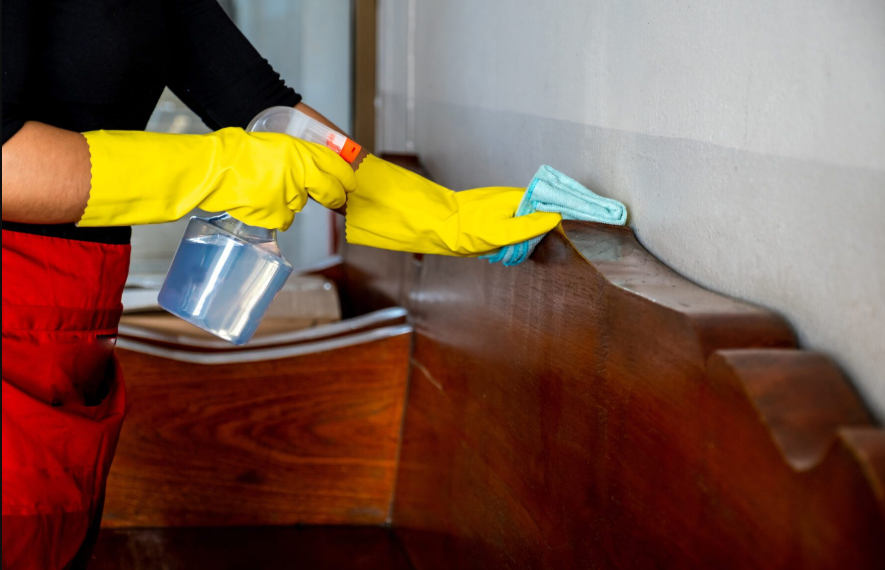
Secondhand Furniture & Bedbug Risks: What to Know
Buying secondhand furniture can be a great way to save money, reduce waste, and find unique pieces for your home. However, one major concern that often goes overlooked is the risk of bedbugs. These tiny pests can easily hide in used furniture, leading to costly and stressful infestations. In this article, we’ll explore the connection between secondhand furniture and bedbugs, how to identify signs of an infestation, and steps you can take to protect your home.
Understanding Bedbugs and How They Spread
Bedbugs (Cimex lectularius) are small, reddish-brown insects that feed on human blood. They are nocturnal and excellent at hiding in cracks, crevices, and soft furnishings. While they don’t transmit diseases, their bites can cause itching, allergic reactions, and significant discomfort.
One of the most common ways bedbugs spread is through secondhand furniture. They can hide in:
- Mattresses and box springs
- Upholstered couches and chairs
- Wooden furniture with cracks or seams
- Dressers, nightstands, and bed frames
Since bedbugs can survive for months without feeding, they can remain dormant in furniture for long periods before becoming active in a new home.
Why Secondhand Furniture Poses a Risk
Many people acquire bedbugs unknowingly by bringing infested furniture into their homes. Common sources include:
- Thrift stores and charity shops
- Garage sales and flea markets
- Online marketplaces (Facebook Marketplace, Craigslist, etc.)
- Discarded furniture on the street
Even if a piece looks clean, bedbugs can be hiding in seams, folds, or inside the furniture. A single pregnant female can lead to a full-blown infestation, making prevention crucial.
See also: Roof Replacement Guide for Homeowners and Property Managers
How to Inspect Secondhand Furniture for Bedbugs
Before bringing any used furniture into your home, follow these inspection steps:
1. Examine the Furniture Thoroughly
- Use a flashlight to check all seams, folds, and crevices.
- Look for live bugs (small, flat, reddish-brown insects).
- Check for tiny white eggs or translucent nymphs.
- Search for dark spots (bedbug excrement) or rusty stains (crushed bugs).
2. Focus on High-Risk Areas
- Mattresses & Couches: Pay close attention to stitching, tufts, and underneath tags.
- Wooden Furniture: Inspect joints, screw holes, and any cracks.
- Drawers & Cabinets: Remove and check inside thoroughly.
3. Use a Credit Card or Tape Test
- Slide a credit card along seams to dislodge any hidden bugs.
- Press sticky tape against surfaces to pick up eggs or tiny nymphs.
4. Smell for Musty Odors
- A strong, musty odor can indicate a large infestation.
If you find any signs of bedbug control ( væggelus bekæmpelse ), avoid bringing the furniture home.
How to Treat Secondhand Furniture to Prevent Bedbugs
Even if no bedbugs are visible, it’s best to take precautions before introducing used furniture into your living space.
1. Heat Treatment
- Steam Cleaning: Use a high-temperature steamer (at least 160°F) on upholstered items.
- Hot Wash & Dry: If possible, remove and launder fabric covers in hot water, then dry on high heat.
- Sun Exposure: Leave furniture in direct sunlight for several hours—heat kills bedbugs.
2. Cold Treatment
- If heat isn’t an option, freezing can work (but takes longer).
- Place small items in a sealed bag and freeze at 0°F for at least four days.
3. Vacuuming & Deep Cleaning
- Use a vacuum with a HEPA filter to remove eggs and bugs.
- Dispose of the vacuum bag immediately in a sealed trash bag.
4. Encasements for Mattresses & Furniture
- Use bedbug-proof encasements on mattresses and box springs to trap any remaining pests.
5. Insecticides (Use with Caution)
- Some insecticides are labeled for bedbugs but should be used carefully.
- Diatomaceous earth (DE) can be sprinkled in cracks to kill bugs over time.
What to Do If You Bring Bedbugs Home
Despite precautions, bedbugs can still slip through. If you suspect an infestation:
- Isolate the Furniture – Keep it away from bedrooms and living areas.
- Inspect Your Home – Check beds, couches, and baseboards for signs of bugs.
- Contact a Pest Control Professional – DIY methods often fail to eliminate infestations completely.
- Avoid Spreading Them – Don’t move infested items to other rooms, as this spreads the problem.
Alternative Options for Safe Secondhand Shopping
If you’re concerned about bedbugs but still want to buy used furniture, consider these safer alternatives:
- Purchase from reputable dealers who inspect and treat items.
- Choose non-upholstered furniture (metal or solid wood with no crevices).
- Ask about return policies in case you discover an infestation later. For more read https://vaeggelus-fri.dk/
Final Thoughts: Balancing Savings and Safety
Secondhand furniture is an eco-friendly and budget-friendly choice, but the risk of bedbugs is real. By carefully inspecting, treating, and taking preventive measures, you can minimize the chances of an infestation. If in doubt, consult a pest control expert before bringing used items into your home




